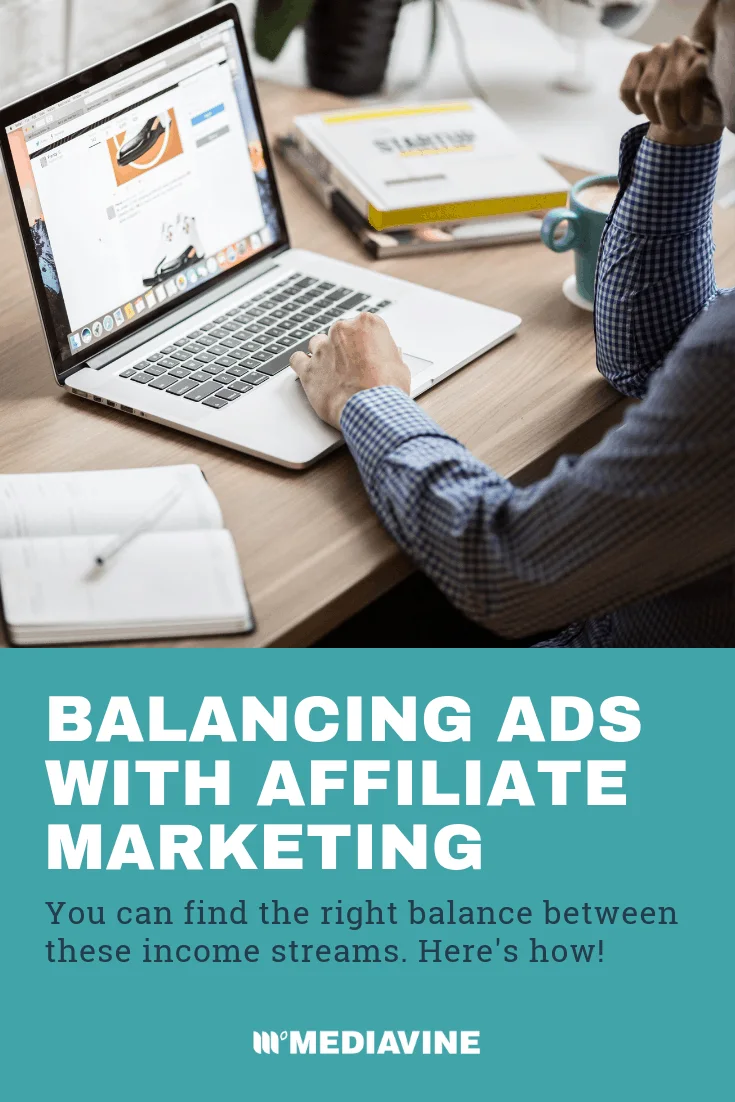Mediavine Ads and Affiliate Marketing: Striking the Right Balance


As a company founded by content creators, which now partners with more than 10,000 content creators in helping build their sustainable businesses, Mediavine recognizes the importance of diversifying your income stream.
While programmatic display and video advertising are always our primary focus, many other opportunities exist. Sponsored work with brands, selling products, e-books and affiliate advertising could all contribute to your overall earnings.
In fact, if you look at some of the income reports submitted by our fantastic publishers, affiliate advertising often represents a significant piece of the pie.

The million-dollar question: Can your programmatic and affiliate ads coexist in harmony, maximizing earnings without compromising website speed or quality?
The answer: Yes, if you strike the right balance. Below, we break down Mediavine’s best practices to help you achieve this equilibrium.

If you have certain posts or pages that are rock stars at generating affiliate revenue, it may be best to remove Mediavine ads from that content. Why?
We’ve written extensively about what programmatic advertising is and how the ads placed on a website are chosen. The SSP and advertisers they work with are parsing every page and every visitor in order to find the perfect ad for that page and user, and at the best price.
That’s what programmatic advertising is and why it’s effective, but not if you’re competing with yourself. The ad exchanges may well pick up on the affiliate product you’re promoting within your content, and subsequently serve an ad for the same or similar product.
In this scenario, you’re taking attention off of your affiliate ad or links with display ads which, while relevant to your users and content, won’t produce as much revenue.
Obviously, you shouldn’t turn off Mediavine ads from the entirety of your site, but in specific cases like this, giving affiliate links free rein may boost conversion rates.

Lucky for you, turning off ads for a specific page or post is as easy as pasting (or removing) a small snippet of code onto that page.
The reason this is effective is that it leaves highly-viewable, optimized Mediavine ads running on the majority of your site’s pages, which may help earn even more revenue from your affiliate traffic.
Wait, what?
Let’s break it down further. Say you’ve created an affiliate post around a great new cleaning product. Within that post is an affiliate ad or link.
The user clicks through and places that product in the cart, but then prices a few more items that caught their eye before eventually purchasing the product.
Now that user has visited a product’s website, where very likely a cookie has been placed to identify the user as someone interested in their products.
Suddenly that user becomes very valuable to that specific advertiser. Anytime they go to any other page on your site, they will see highly relevant ads from that product’s website.
Because that programmatic advertiser is likely paying top dollar to place those ads in front of that user, you’ve now earned off of that user twice: Once for the affiliate product, and once for the programmatic ad(s). The definition of double dipping!

Mediavine’s approach to advertising is to display fewer ads than we theoretically could, but in highly viewable positions, enhancing user experience and revenue alike.
Affiliate ads should follow the same guidelines.
Poor placement of affiliate ads, links or widgets could not only hurt affiliate ad performance, but also lead to decreased Mediavine ad performance.
For example, placing a large affiliate widget in the middle of your content can mistakenly signal the end of your post to some users, causing them to bounce early.
Ideally, larger widgets are placed at or near the end of your post, below your most valuable content. This keeps users engaged with your content — and the ad units contained within that content — all the way through to the end of your post.
How do you know what users are really engaging with? Consider using a heat map. Besides being super awesome, these maps actually help identify audience behavior in ways that are eye-opening. Use that data to place affiliate ads accordingly!
Conventional wisdom isn’t always on point. The sidebar, for instance, is always viewed as an easy, open piece of real estate. Seems like a no-brainer for affiliate ad placement, right? Not necessarily, as overloading the sidebar can hurt your earnings.
You might convert a few more affiliate sales, but adding extra sidebar length (remember your sidebar site health) may dent your Mediavine ad revenue in the process.
Again, it’s all about balance and using all the tools — and information — at your disposal to make the best choices on a site-wide and page-specific level.

Site speed isn’t everything, it’s the only thing. — Eric Hochberger
This wouldn’t be a proper Mediavine blog post if we didn’t mention site speed at least once. Affiliate ads can be heavy, especially if using multiple images and links.
Coupled with the fact that most affiliate ads typically don’t utilize lazy loading, this can have significant impacts on your overall site speed scores.
Any time site speed is affected negatively, ad revenue is also affected negatively. Keep this in mind when adding new affiliate income streams.
Is $46 a month from a new affiliate really that much? What did it cost you in earnings from Mediavine ads as a result of poorer page load times?
There are situations when going all-in on your affiliate links makes sense, other cases when it clearly doesn’t, and others still when it’s a little less clear.
If you’re smart about it and consider all the factors, you’ll know the difference and reap the benefits from an intelligent affiliate advertising strategy.
Stay up to date with the latest from Mediavine
Welcome to the much-anticipated release of the fifth-annual edition of “The Best eCPM Days of the Year” calendar. Each year, we analyze historical trends to provide publishers with a graphical …
“Let’s talk about politics.” We know. This is a phrase absolutely no one wants to hear uttered around the dinner table or backyard barbecue these days. But hear us out. …
 Heather Tullos
Heather Tullos
The switch from Universal Analytics to GA4 is well underway, and as we all learn about these new metrics, adjust perspectives on how we measure success on our sites, and …